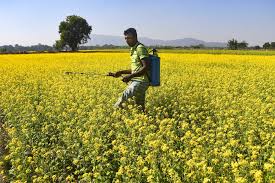India’s Agri-Export Regime

- 17 May 2025
In News:
India has recently inked free trade agreements (FTAs) with the United Kingdom, a trade and economic partnership agreement with the EFTA bloc, and concluded terms of reference for an India-US trade agreement. It is also negotiating with the European Union. In short, India is racing to plug itself into shifting global supply chains. Yet amid all the flashbulbs and photo?ops, India’s agriculture sector remains conspicuously absent.
Definition:
India’s agricultural export regime comprises the policies, institutions, and infrastructure that regulate and promote the export of farm produce.
Present Status:
- In 2023–24, India’s agricultural exports declined to $48 billion, down from $52 billion in 2022–23.
- Basmati rice accounts for approximately 21% of the total agri-export value.
- Bodies such as APEDA and branding tools like ODOP-GI tags play a role in market promotion.
- Agricultural products have been kept largely outside recent FTAs due to concerns over food security, rural employment, and political sensitivity.
Key Challenges in India’s Agri-Export Ecosystem
- Limited FTA Coverage:Agriculture is often excluded or granted extended transition periods in trade agreements, limiting access to foreign markets.
- High Rejection Rates:Several Indian agri-products face export rejections due to non-compliance with Sanitary and Phytosanitary (SPS) norms and pesticide residue limits (e.g., mangoes, groundnuts).
- Governance Gaps:With agriculture under the State List and trade under the Union List, there is often a disconnect in policy coordination, affecting timely decisions.
- Lack of Value Addition:A significant share of exports is in the form of raw produce, with insufficient emphasis on processed or brandedagri-goods.
- Infrastructure Deficits:Inadequate cold storage, pre-cooling facilities, and container depots—particularly in landlocked states like Uttar Pradesh and Madhya Pradesh—hinder export readiness.
- Subsidy Distortions:Input subsidies on power, water, and fertilizers disincentivize farmers from diversifying to export-oriented, high-value crops.
Strategic Roadmap for Agri-Export Growth
- Boost Value Addition:
- Establish agro-processing zones near APMCs.
- Incentivize processed exports through output-linked schemes.
- Strengthen Policy Coordination:Form a National Agri Trade Council involving the Centre, States, APEDA, FSSAI, and industry stakeholders to harmonize regulations and streamline decision-making.
- Reform Subsidy Framework:Transition to Direct Benefit Transfers (DBT) instead of input-based subsidies to encourage crop diversification and resource efficiency.
- Leverage Agri-Tech Solutions:Expand use of AI tools for crop health monitoring, promote vernacular advisories, and enhance access to real-time market data.
- Upgrade Infrastructure:
- Deploy GIS-based mapping for tracking surplus zones and export potential.
- Develop pre-cooling chains, inland ports, and container hubs in the hinterlands.
- Improve Connectivity in Interior States:Focus on building logistics networks in non-coastal states like UP and MP to integrate them with export supply chains.
